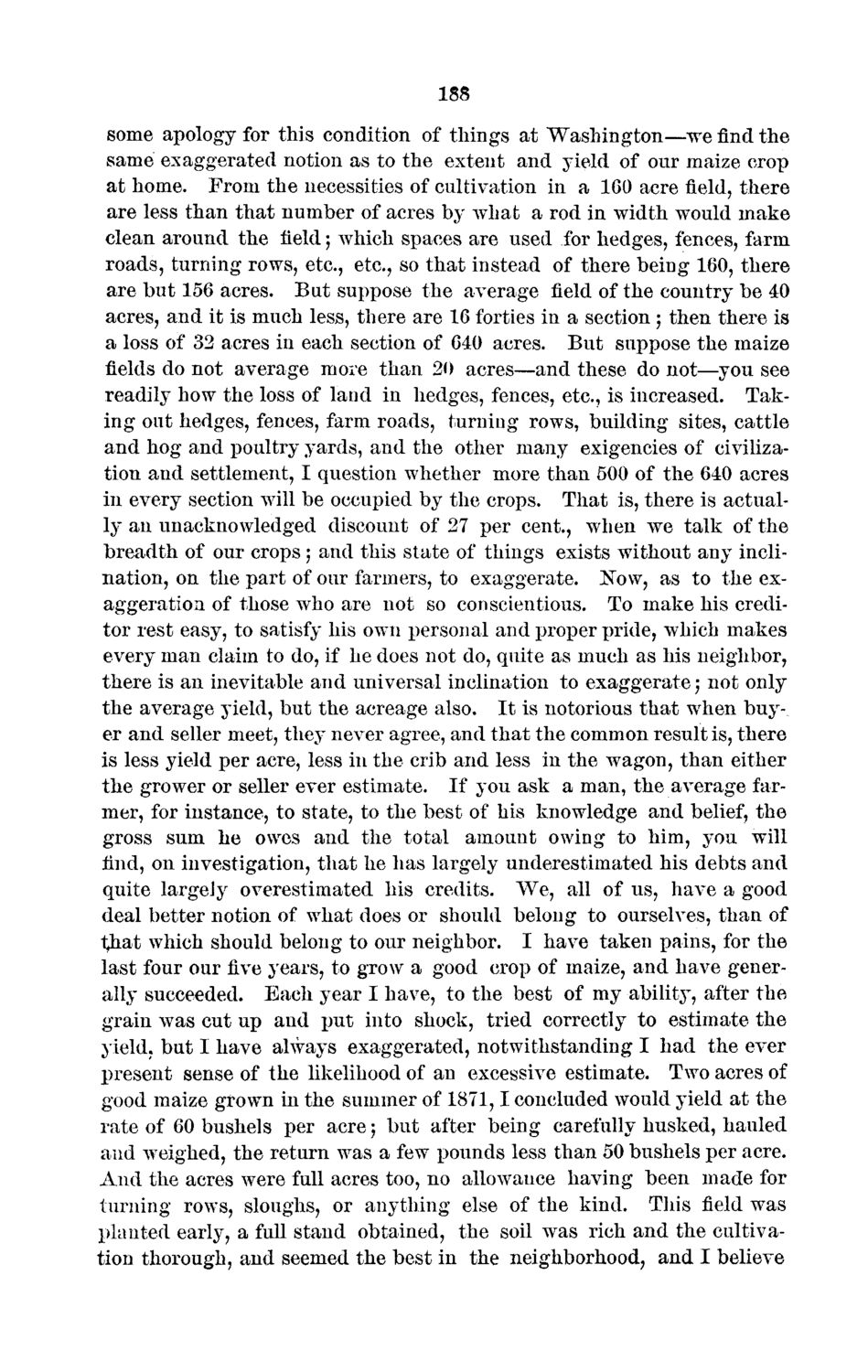| |
| |
Caption: Board of Trustees Minutes - 1872
This is a reduced-resolution page image for fast online browsing.

EXTRACTED TEXT FROM PAGE:
188 some apology for this condition of things at Washington—we find the same exaggerated notion as to the extent and yield of our maize crop at home. From the necessities of cultivation in a 160 acre field, there are less than that number of acres by what a rod in width would make clean around the field; which spaces are used for hedges, fences, farm roads, turning rows, etc., etc., so that instead of there being 160, there are but 156 acres. But suppose the average field of the country be 40 acres, and it is much less, there are 16 forties in a section ; then there is a loss of 32 acres in each section of 640 acres. But suppose the maize fields do not average more than 20 acres—and these do not—you see readily how the loss of land in hedges, fences, etc., is increased. Taking out hedges, fences, farm roads, turning rows, building sites, cattle and hog and poultry yards, and the other many exigencies of civilization and settlement, I question whether more than 500 of the 640 acres in every section will be occupied by the crops. That is, there is actually an unacknowledged discount of 27 per cent., when we talk of the breadth of our crops ; and this state of things exists without any inclination, on the part of our farmers, to exaggerate. Kow, as to the exaggeration of those who are not so conscientious. To make his creditor rest easy, to satisfy his own personal and proper pride, which makes every man claim to do, if he does not do, quite as much as his neighbor, there is an inevitable and universal inclination to exaggerate) not only the average yield, but the acreage also. It is notorious that when buyer and seller meet, they never agree, and that the common result is, there is less yield per acre, less in the crib and less in the wagon, than either the grower or seller ever estimate. If you ask a man, the average farmer, for instance, to state, to the best of his knowledge and belief, the gross sum he owes and the total amount owing to him, you will find, on investigation, that he has largely underestimated his debts and quite largely overestimated his credits. We, all of us, have a good deal better notion of what does or should belong to ourselves, than of that which should belong to our neighbor. I have taken pains, for the last four our five years, to grow a good crop of maize, and have generally succeeded. Each year I have, to the best of my ability, after the grain was cut up and put into shock, tried correctly to estimate the yield, but I have always exaggerated, notwithstanding I had the ever present sense of the likelihood of an excessive estimate. Two acres of good maize grown in the summer of 1871,1 concluded would yield at the rate of 60 bushels per acre 5 but after being carefully husked, hauled and weighed, the return was a few pounds less than 50 bushels per acre. And the acres were full acres too, no allowance having been made for turning rows, sloughs, or anything else of the kind. This field was planted early, a full stand obtained, the soil was rich and the cultivation thorough, and seemed the best in the neighborhood, and I believe
| |